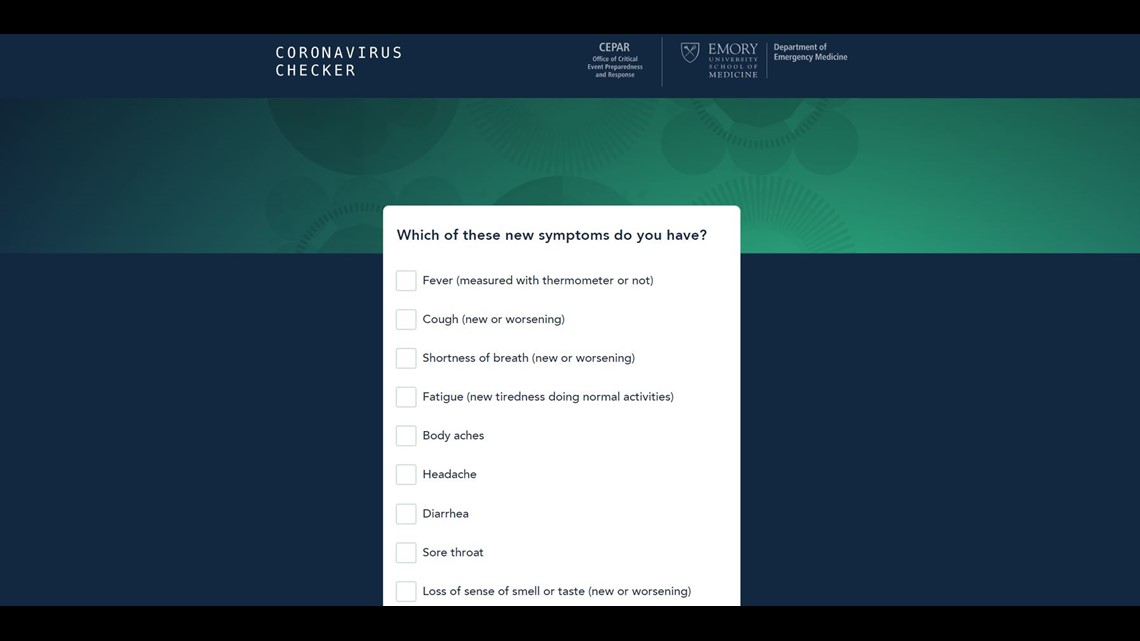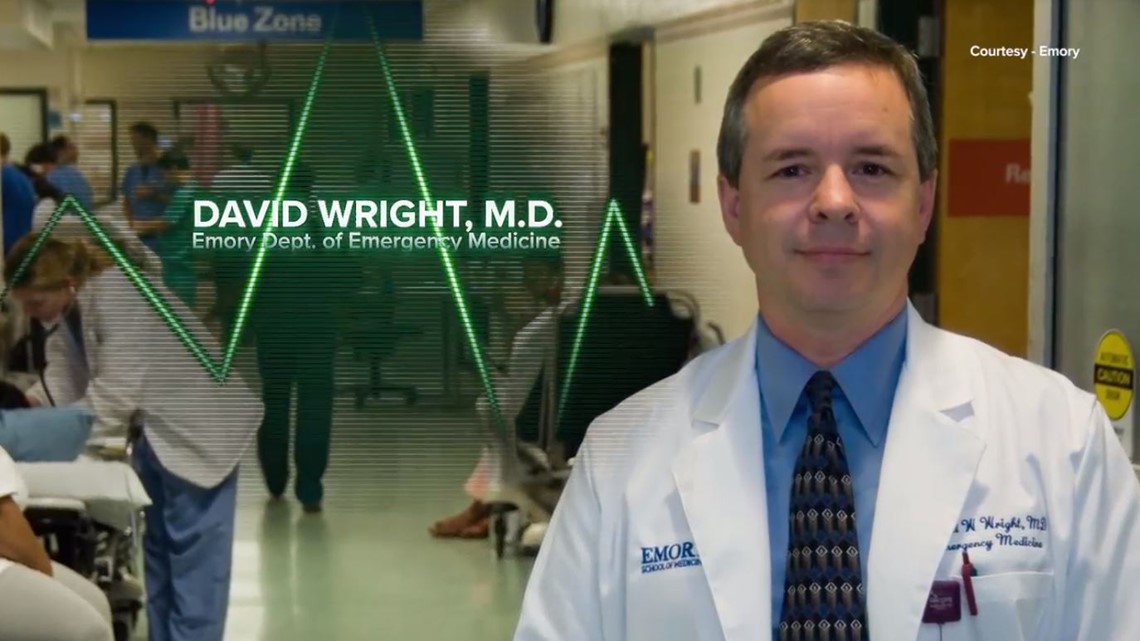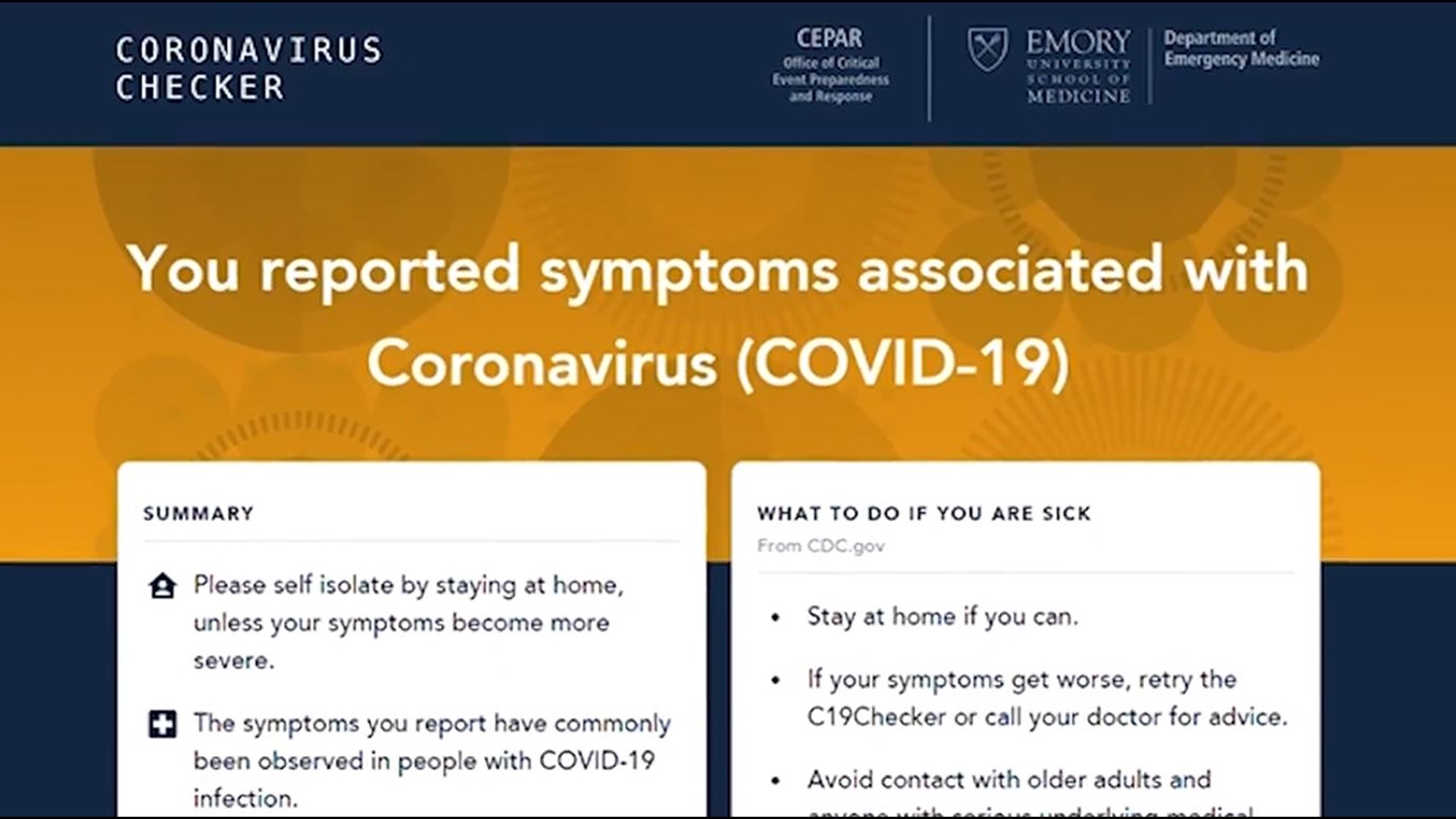ATLANTA — A tool designed to help you figure out when to stay home – and when to call your doctor – could also help hospitals figure out when a wave of patients will hit.
Dr. David Wright, an emergency medical physician at Emory, says more than 525,000 people around the world have gone online to check out C19check.com.
“It’s an educational tool, it is not a diagnostic. It will not tell you whether you have COVID or not,” Wright said.
But it can help make the Centers for Disease Control and Prevention (CDC) guidelines easier to understand. The free tool asks a few questions about your symptoms, medical history, and other risk factors. It then calculates whether you should self-isolate, call your doctor or pay a visit to the emergency room.
Wright stressed that the tool isn’t meant to replace your doctor.


So far, nearly 40 percent of the people using C19check.com are what Wright described as the "worried well" - those that are sick but not with symptoms related to COVID-19.
It’s crucial, he said, that their curiosity or concern doesn’t trigger a visit to the hospital where they could end up being exposed to the virus. Plus, reducing unnecessary emergency room visits saves personal protective gear for when it’s really needed and helps medical professionals focus on the cases that require more care.
“This is an enemy that we can’t see. I’m careful to compare this to wartime or the military are using the terminology front lines, because I respect the military so much and what they do and how they really put themselves in harm’s way, but these viruses are really like the bullets. And if we’re not careful, it could kill us too. It can be a scary place to work," said Wright.
The triage tool is based on a similar program created in 2009 to help people better understand what to do during the H1N1 pandemic.
Healthcare software company Vital was already working with Emory on another project when the decision was made to shift gears. Together with the Emory Department of Emergency Medicine’s Health DesignED Center and the Office of Critical Event Preparedness and Response, they had it ready to go in just 15 days.
“It was stunning how quick we were able to do this. This company, to do social good, pivoted all of their programmers and turned them into working with us to create this application," Wright said.


Since the triage tool launched three weeks ago, about 48,000 people have been deemed "high risk."
The program does not collect your personal information, but if you agree, it will compile symptoms by zip code.
Programmers are creating an option for those at elevated risk to get daily reminders to take the test again the next day and Wright would like to see an option where users could enter more information for research purposes.
“Where are people who have cough, fever and shortness of breath located in a general region? You see a lag of when people get infected and end up needing to be hospitalized and intensive care unit," Wright said. "That’s about a one to two-week lag. So, we can probably get a sense early of when patients all the sudden are going to start hitting the hospitals."
Wright said he believes we have to do everything we can to slow the spread and be prepared for the surge when it does come. He’s surprised, outside of news reports that we haven’t seen more campaigns to encourage people to stay at home.
“Where is the ‘We want you’ kind of sign back in World War II where we’re telling people, giving those messages from the national and the state governments to stay home. Honor social distancing," he said. "That’s how we’re going to flatten the curve and this application is to do that."
The program can be used anywhere in the world and is available in multiple languages. The CDC also worked with Apple to create an online tool, but both denied our requests for information.

